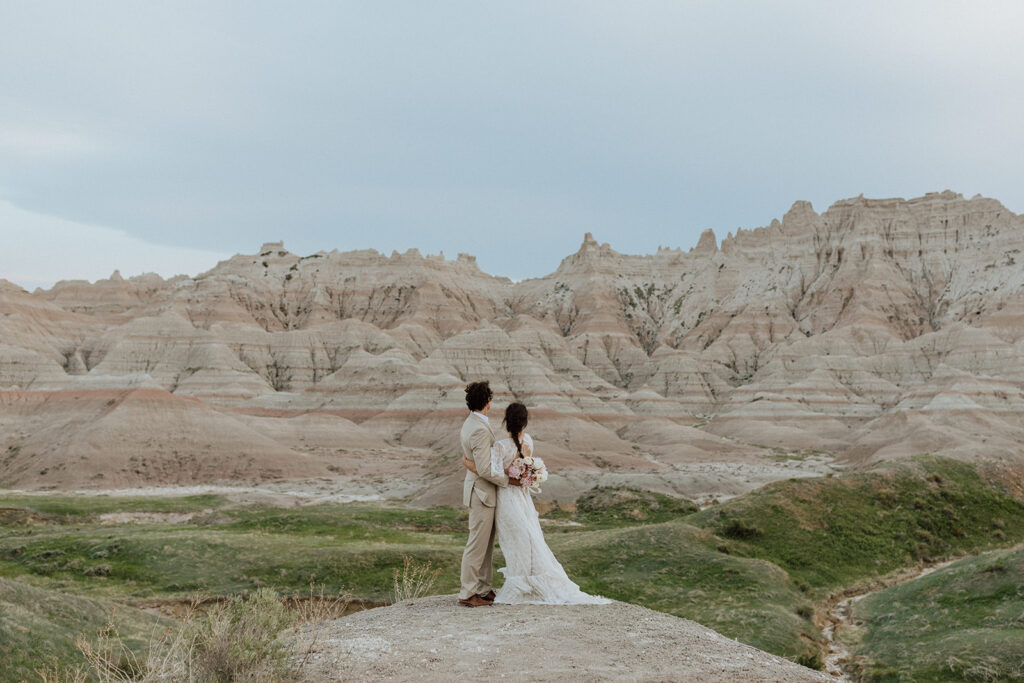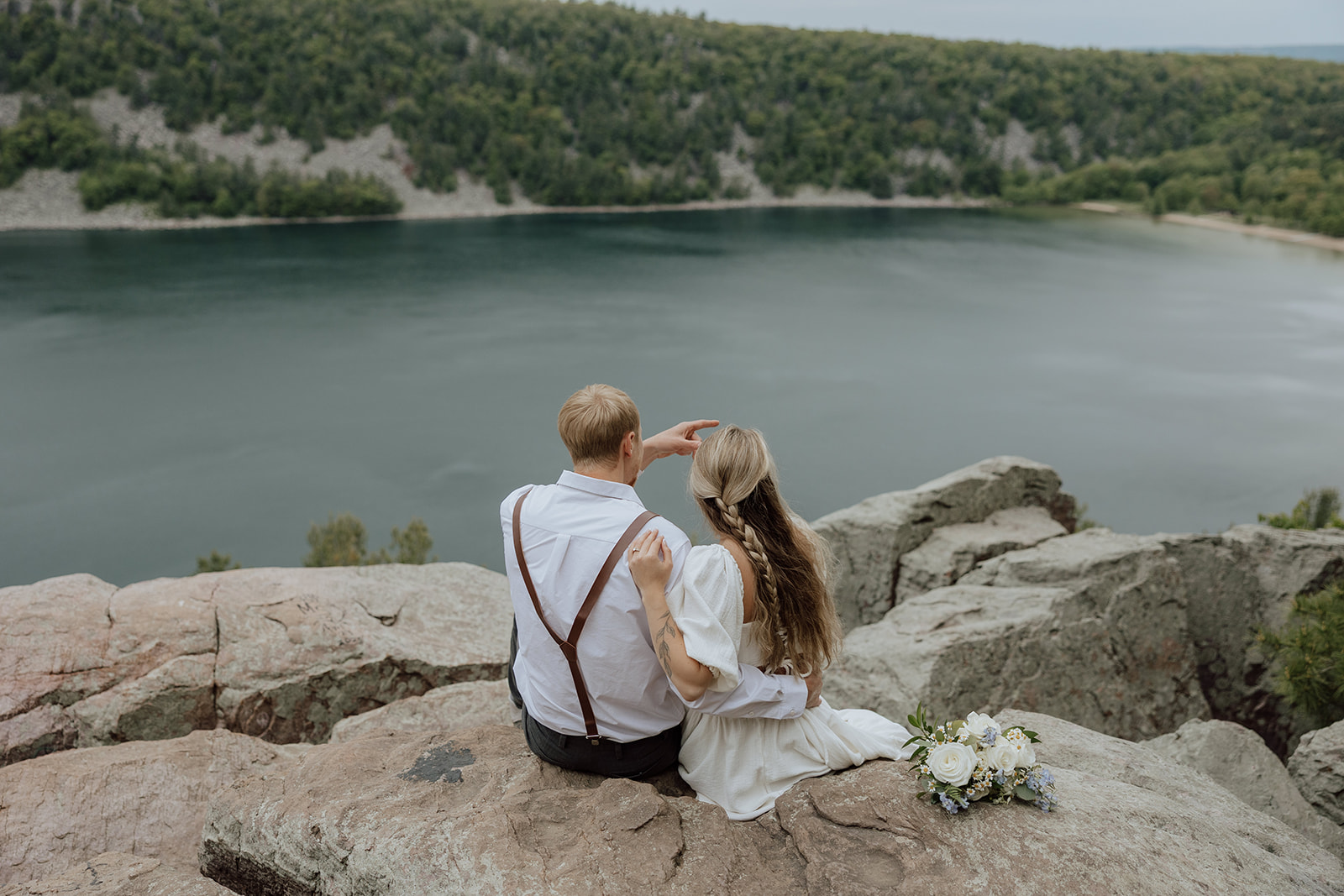Eloping in the outdoors is an amazing way to start your marriage. But with that freedom comes responsibility. When we choose to get married in wild places, we’re also choosing to care for them. That’s where Leave No Trace comes in.
If you’ve never heard the term before, Leave No Trace (or LNT) is a set of guidelines designed to help people enjoy the outdoors responsibly. Whether you’re hiking in a national park, camping on public land, or planning your elopement at a mountaintop or lakeshore, Leave No Trace offers a framework for minimizing your impact on the environment.
Here’s why it matters—and why you should build these principles into your elopement planning from the very start.
1. Elopements Are Growing—and So Is Our Impact
Elopements have exploded in popularity over the last few years. More couples are choosing meaningful, intimate celebrations in nature—and that’s amazing. But it also means more foot traffic in fragile environments, more people venturing off trail, and more waste being left behind.
Practicing Leave No Trace during your elopement helps keep these places beautiful and accessible not just for you, but for everyone who comes after you. It’s a simple way to respect the land you’re getting married on and to contribute to the sustainability of outdoor weddings as a whole.
2. You’re Getting Married in a Place You Love—Protect It
Most couples who choose an outdoor elopement do it because they love nature. Maybe it’s the forest you grew up camping in. Maybe it’s the park where you first hiked together. Maybe it’s a brand-new destination you’ve always dreamed of visiting.
Either way, this place becomes part of your story. Practicing Leave No Trace is one of the best ways to say thank you. It’s about showing respect—not just to the land, but to the wildlife, ecosystems, and other people who share it.
3. Leave No Trace is Not Just About Trash
When people hear “Leave No Trace,” they often think it’s just about packing out your garbage. That’s part of it, but the principles go deeper. Here’s a quick look at the seven core Leave No Trace principles:
- Plan Ahead and Prepare
Know the rules, weather, and terrain. This includes understanding permit requirements for elopements. - Travel and Camp on Durable Surfaces
Stick to trails and established areas to avoid damaging fragile vegetation. - Dispose of Waste Properly
Pack out all trash, food, and even biodegradable waste like fruit peels. Don’t use confetti even if it’s “biodegradable”, and all decor needs to be 100% packable. - Leave What You Find
Don’t take rocks, flowers, or other natural items as souvenirs. Let them stay where they belong. - Minimize Campfire Impacts
If you’re planning on doing a fire during your elopement, follow local fire regulations carefully. - Respect Wildlife
Give animals plenty of space, never feed them, and store food securely. - Be Considerate of Others
Don’t block trails or take over popular viewpoints for hours. Be aware of how your celebration affects others enjoying the area.
Even something as small as stepping off-trail for a photo can cause long-term damage. One moment of convenience can take years to heal.
4. You Set the Example
Getting married outside already sets you apart. When you practice Leave No Trace, you’re also setting an example for what it means to get married responsibly in nature. You show your guests (if you have them), your photographer, and your vendors that celebrating in the outdoors means more than just a pretty backdrop—it means treating the land with care.
If you’re working with vendors who aren’t familiar with LNT practices, this is a great opportunity to start a conversation. Many photographers, for example, will already be on board with helping you follow LNT guidelines and can guide you in making thoughtful choices—like avoiding high-impact locations during peak hours or using natural elements in your photos without disturbing them.
5. It’s Part of the Experience
Leave No Trace isn’t about restriction—it’s about intention. By planning your elopement around these principles, you create a day that reflects not just your relationship, but your values.
That could mean:
- Choosing a weekday or shoulder season date to avoid crowds
- Using compostable or reusable items instead of single-use plastics
- Using a bouquet made up of native flowers to the area you’re eloping in
- Skipping décor that could blow away and using the natural surroundings as your “decoration”
Every detail becomes more meaningful when it’s chosen with care. And at the end of the day, you leave with memories—not a mess.
6. Access Can Be Lost if We Don’t Protect It
One of the most serious consequences of ignoring Leave No Trace is that access to beautiful locations can be taken away.
When areas are damaged—whether from litter, off-trail trampling, illegal ceremonies, or overwhelming crowds—land managers are often forced to close trails, restrict permits, or ban weddings entirely. This has already happened in popular parks and wilderness areas across the country. What starts as a few people “just doing it for the photo” can snowball into long-term damage and increased regulations for everyone.
If you want to elope in a remote or iconic location, keeping it clean and cared for isn’t just about ethics—it’s about preserving access for future couples. Practicing Leave No Trace is one of the best ways to help ensure that these places remain open, accessible, and beautiful for years to come.
7. The Outdoors Is a Gift—Let’s Keep It That Way
When you look back on your elopement, you’ll remember how it felt to stand in that place, say your vows, and start your marriage in the quiet beauty of nature. Practicing Leave No Trace ensures that others will have the chance to do the same.
It’s a small effort with a lasting impact—and that’s what your day should be about anyway: not just one beautiful moment, but something that lasts.

Final Thoughts
You don’t have to be perfect. Leave No Trace isn’t about guilt or gatekeeping—it’s about awareness, preparation, and doing your best. When you build these principles into your elopement from the start, they become second nature.
If you’re not sure where to begin, talk to your elopement photographer or planner. Many of us are trained in Leave No Trace practices and can help guide you through the planning process in a way that aligns with your values.
Because at the end of the day, the goal is simple: to leave these places as beautiful as we found them—if not better.
Let’s Plan an Elopement That Respects the Outdoors
I’m Abby—a Wisconsin-based elopement photographer who believes your wedding day should feel like you, without the pressure of a big production. I help couples plan intentional elopements in nature, with real experiences and real moments—not just pretty photos.
I’m also a Leave No Trace–aware photographer, which means I’ll guide you through planning your day in a way that honors the places you love. From location scouting and timelines to permits and gear lists, I’ve got you covered—so you can focus on what matters most and leave the rest behind.
If you’re ready to plan an elopement that’s both unforgettable and sustainable, I’d love to help you make it happen. Tap the button below to learn more!

LEAVE A COMMENT
Comments